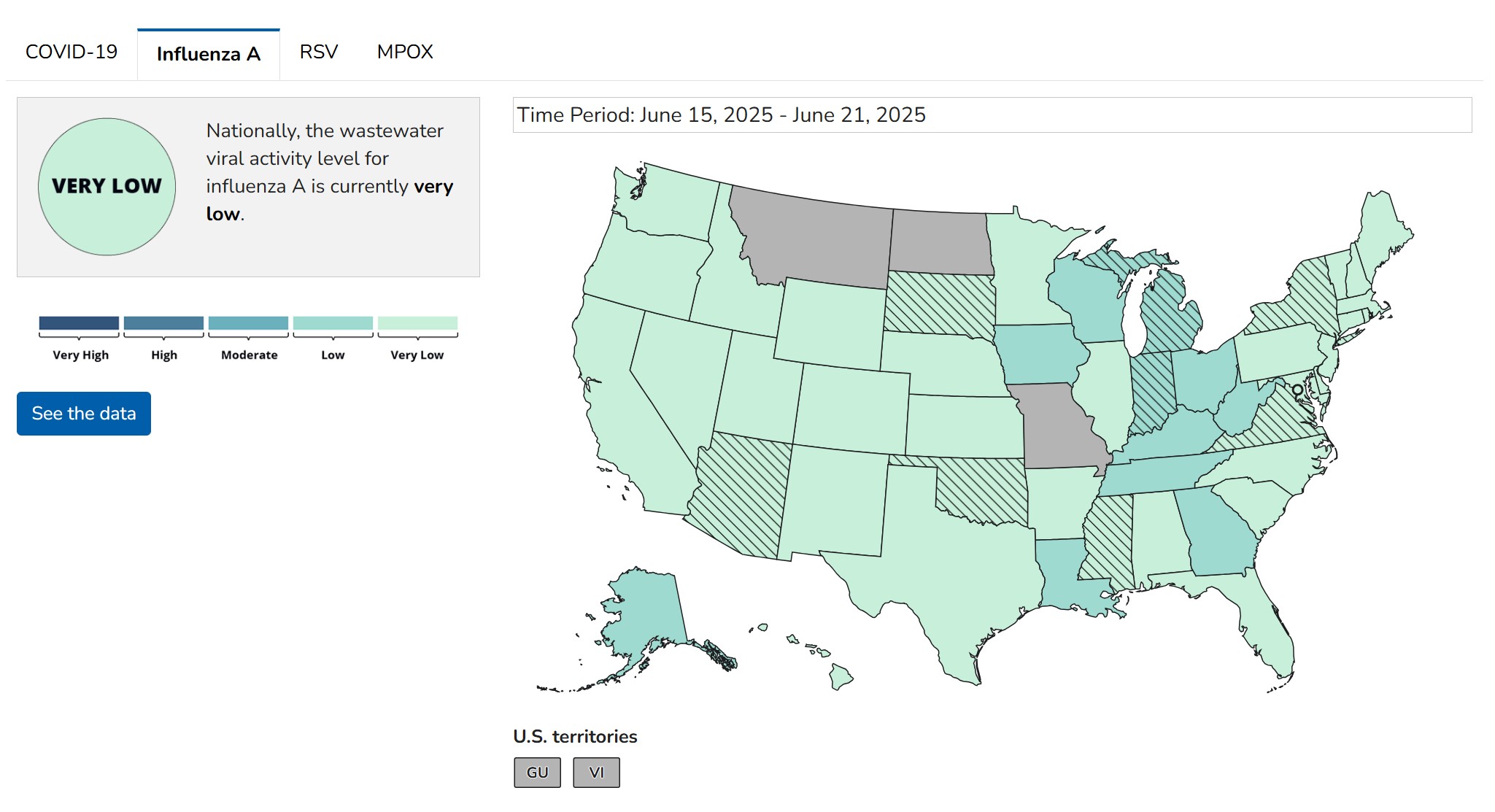At a glance
Data from sewage can serve as an early warning system for emerging infections.
Why the effort matters
Strengthening core public health data sources for rapid, accurate decision making is a primary public health data goal. Access to near real-time health data strengthens public health responses, protects communities and saves lives.
Wastewater monitoring data is a relatively new addition to the nation's core public health data sources. Data from wastewater (sewage) serve as an early warning system for emerging infections, helping communities prepare for and address increasing cases of infectious diseases. Learn more about how wastewater monitoring works.
By analyzing community-level wastewater samples, health officials can track virus trends, identify new variants and compare infection levels across regions. Using these data alongside other health information such as emergency department visits helps health officials efficiently allocate resources and take action to protect community health.
Because these data are available publicly, individuals can also use the data to make health decisions on how to best protect themselves and their families.
Data on viruses such as SARS-CoV-2, influenza A, RSV (respiratory syncytial virus) and the virus that causes mpox are updated weekly on CDC's Wastewater Dashboard. And because wastewater monitoring data are most useful when used with other data, such as hospital visits or clinical testing data, CDC has also integrated wastewater data in the Respiratory Illnesses Data Channel to better show the entire picture of respiratory viruses in a community.
The progress
In 2024, the Public Health Data Strategy set a goal of increasing the number of public health jurisdictions and contract partners submitting data for at least 80 percent of wastewater samples for SARS-CoV-2 and other infectious diseases to CDC within seven days of collection. By May 2025, more than a third of reporting partners were meeting this goal. This faster reporting helps detect public health threats sooner and provides critical data for health officials and individuals.
To support this timely reporting, CDC collaborates with utility providers, laboratories and health departments to streamline data submission. Small and rural communities in particular face challenges such as limited staff and longer shipping times which require innovative solutions. CDC's wastewater program provides technical assistance to help overcome these barriers and improve data reliability.
What users are saying
"CDC's Application Programming Interface (API) data submission option for wastewater results helped streamline Washington's workflows, significantly reducing manual efforts for epidemiologists and increasing data quality. Fully automated submissions also ensure efforts are consistently contributing to CDC's timely and data-driven public health responses." – Washington's Wastewater-Based Epidemiology Program
"When my 5th grader got a stuffy nose and severe sore throat, I thought ... is it a cold? The flu? COVID-19? RSV? Then I remembered I could check the wastewater data for our area and noticed that COVID levels were sky high, but flu levels were low. I tested him with an at-home COVID-19 test, and it was positive. The wastewater data saved me a trip to the pediatrician and unnecessary exposure in a waiting room." – Georgia community member

